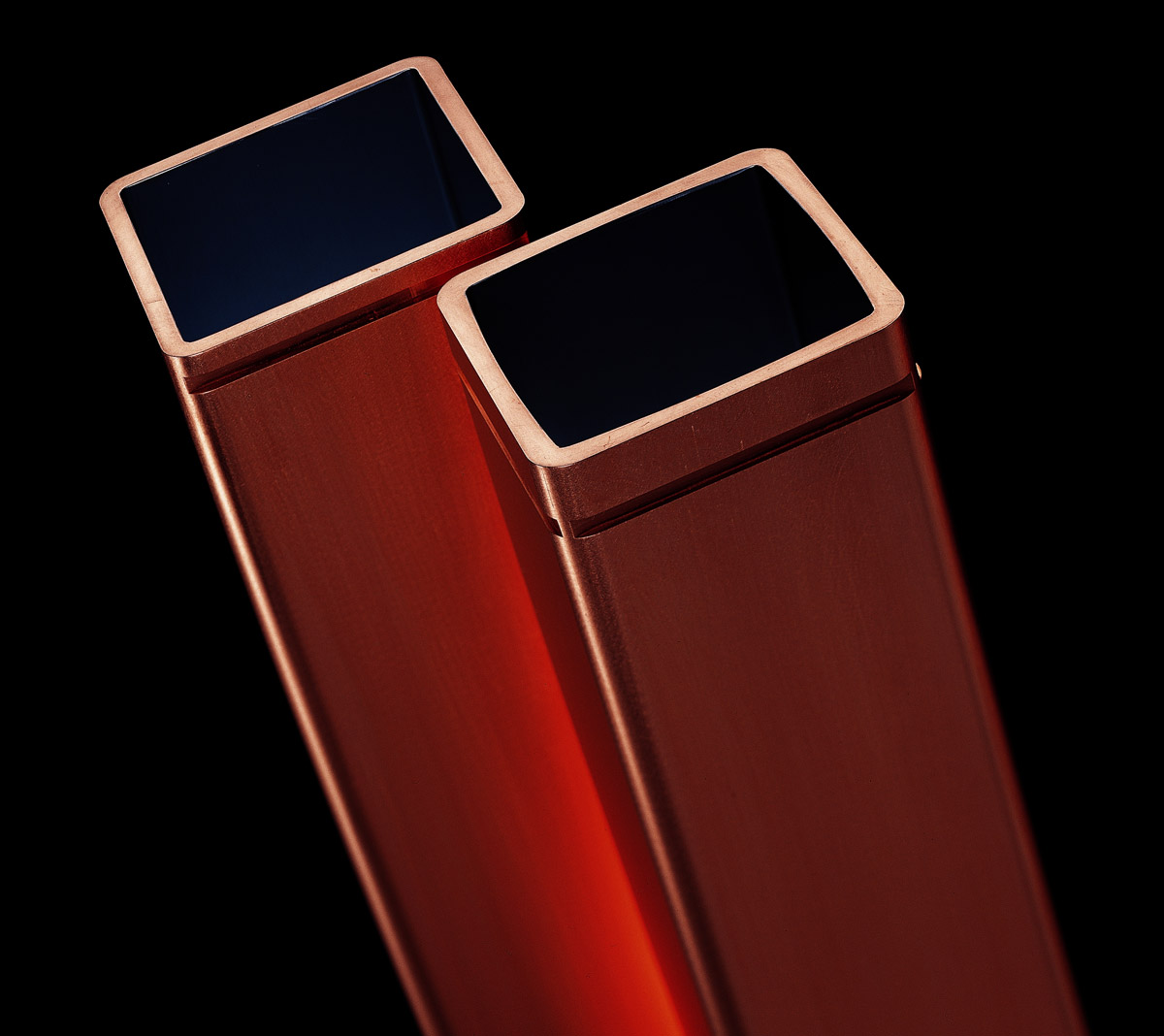Primary shaping
Manufacturing processes in which a workpiece is produced from shapeless material are primary shaping processes. In this process, the cohesion of the material particles is created. A distinction is made between primary shaping from the gaseous or vapour state, from the liquid, mushy or paste-like state, from the solid (granular or powdery) state and primary shaping by casting, sintering and electrolytic deposition.
Melting and casting
Copper is melted either in fuel-heated or induction furnaces. Neutral or oxidising melting is recommended for copper. In the latter case, hydrogen absorption (high hydrogen solubility of the melt) is prevented by an excess of oxygen. Subsequently, deoxidisation must be carried out with suitable means, usually with a copper-phosphorus master alloy. Casting is the fastest process to get from raw metal to finished product. For shaping by casting, the same moulding and casting processes are used for copper materials as for iron and other non-ferrous metals. In principle, the copper casting materials are suitable for all conventional casting processes. For technical and economic reasons, by far the largest number of all castings made of copper materials are produced by the sand, chill-mould, centrifugal, continuous casting and – to a certain extent – die-casting processes.

Casting in permanent moulds
For the production of shaped castings made of copper and copper alloys, casting processes with permanent metal moulds are used on a large scale. Metal moulds achieve better dimensional accuracy and a better surface of the castings. In addition, a grain refinement and thus an improvement of the mechanical properties is achieved by the more abrupt cooling, due to a steeper temperature gradient in the metal mould. The main focus is on the gravity die casting process, known as precision gravity die casting when using drawable steel cores, and the centrifugal and continuous casting processes.
Composite casting
Beginning in the 1930s, the strip casting process for the production of thin-walled rolled bushings with cast-on copper-lead-tin alloy for internal combustion engine construction became established. In this process, so-called rolled three-material bearings are produced with an approx. 0.35 mm thick layer of lead bronze made of the alloy CuSn5Pb20-C-GS (G-CuPb20Sn). A so-called running-in layer of white metal (lead/tin 91/9 %) is then applied to this layer as an “overlay”. In the continuously operating strip casting plant, the strip of soft carbon steel, which later serves as a steel support shell, runs from the ring into an annealing and casting line at a constant speed in thicknesses of 1.1 to 3.3 mm and widths of 100 to 150 mm. The strip is bevelled on both sides to prevent the lead bronze from flowing off during pouring, then bright annealed and then poured with lead bronze. The composite strip is rewound as it leaves the annealing and casting section. On the processing machines, the strip is milled, re-rolled, ground and punched out to the strip size for the bearing or bushing to be produced. Recently, worm wheel rims made of copper-tin alloys have also been cast onto hubs made of grey cast iron or steel using the centrifugal casting, shell moulding or chill casting processes.
Powder metallurgical forming (sintering)
Are you looking for different content?